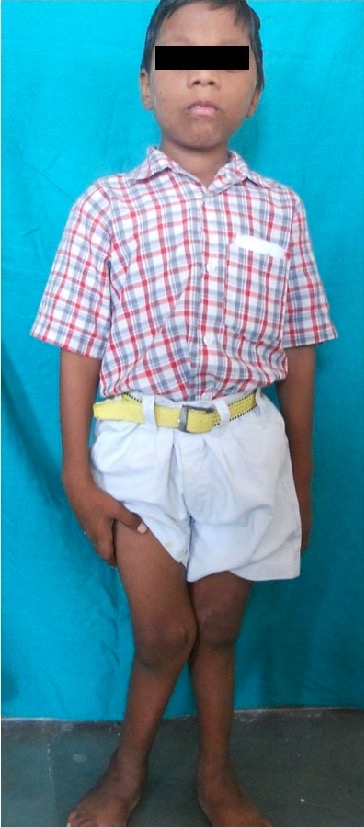Playlist
Show Playlist
Hide Playlist
Osteomalacia with Case
-
Slides Calcium Metabolis.pdf
-
Reference List Endocrinology.pdf
-
Reference List Metabolic Bone Disorders.pdf
-
Download Lecture Overview
00:01 Here is another case: A 62-year old woman is evaluated for worsening right leg pain over two years. 00:08 The pain is worse with weight bearing. 00:10 She is post-menopausal and is in otherwise good health. 00:14 There is no family history of fractures. 00:17 She takes no medications. 00:19 And on physical exam, the vital signs are normal. 00:23 Her BMI is 36. 00:25 She is pale and has difficulty bearing weight and limps when walking. 00:30 She has discomfort on palpation over the right anterior tibia. 00:34 The remainder of the physical exam is normal. 00:37 Her labs show a calcium of 8.2 mg/dL, a phosphorous of 2.4 mg/dL, a PTH of 179 pg/mL, alkaline phosphatase of 145 U/L and 25-hydroxy vitamin D level that is less than 6 ng/mL What is the most likely diagnosis? This patient is post-menopausal, she has skin pallor and bone pain. 01:06 She has difficulty walking and her labs show a very low vitamin D level, low calcium and phosphorous as well as elevated PTH and elevated alkaline phosphatase. 01:17 This patient has severe prolonged vitamin D deficiency and likely associated osteomalacia The presence of pallor on this patient's physical exam is a good clue that you may have prolonged lack of exposure to sunlight and consequently is manifesting with asymptomatic expression of very very low vitamin D levels. 01:41 Osteomalacia is most commonly caused by severe prolonged vitamin D deficiency which leads to inadequate concentrations of calcium and of phosphate in the bone. 01:50 It prevents the mineralization of newly-formed bone as well. 01:55 Chronically low levels of vitamin D can lead to rickets in children and osteomalacia in adults. 02:01 Vitamin D deficiency is caused by factors such as intestinal malabsorption due to gastrointestinal disorders or restricted access to sunlight. 02:12 In promoting absorption from the gut, vitamin D enables proper bone mineralization by maintenance of calcium and phosphorous levels. 02:21 Vitamin D also modulates the action of osteoblasts and osteoclasts, ensure proper bone growth and remodelling. 02:27 Usually low 25-hydroxy vitamin D, low calcium and phosphate and elevated parathyroid hormone secondary to hypoparathyroidism as well as an elevation of alkaline phosphatase are seen as we found classically in our patient. 02:43 A 1,25 dihydroxyvitamin D may be normal, low or high and is not usually helpful in the diagnosis of most forms of osteomalacia.
About the Lecture
The lecture Osteomalacia with Case by Michael Lazarus, MD is from the course Metabolic Bone Disorders. It contains the following chapters:
- Case: 62-year-old Woman with Right Leg Pain
- Osteomalacia Causing Bone Pain
Included Quiz Questions
Features of osteomalacia include...? (Select all that apply):
- ...low bone mineral density by DEXA exam, with increased risk for fractures.
- ...normal parathyroid hormone level.
- ...high alkaline phosphatase.
- ...low phosphate.
- ..bone pain.
Which of the following are common causes of osteomalacia/rickets? (Select all that apply):
- Intestinal malabsorption of vitamin D
- Lack of exposure to sunlight
- Vitamin D toxicity
- Obesity
- Smoking
Customer reviews
5,0 of 5 stars
| 5 Stars |
|
1 |
| 4 Stars |
|
0 |
| 3 Stars |
|
0 |
| 2 Stars |
|
0 |
| 1 Star |
|
0 |
Great content. Super easy to follow, to the point and reminds me of lab values/ rationales.




